![]()
![]()
![]()
Use LEFT and RIGHT arrow keys to navigate between flashcards;
Use UP and DOWN arrow keys to flip the card;
H to show hint;
A reads text to speech;
19 Cards in this Set
- Front
- Back
|
Heat is a byproduct of all chemical reactions But how do organisms deal with nitrogenous waste?
|
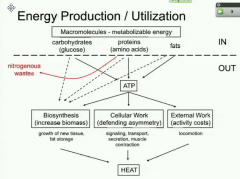
|
|
|
Nitrogenous Waste |
- Ingested foods - end products are typically CO2 and metabolic H20 - Metabolic breakdown of proteins also produces ammonia (NH3) nitrogenous waste these are salvaged for amino acid synthesis, excreted or converted to less toxic forms of nitrogen |
|
|
3 Different Types of Excretion of Nitrogenous Waste |

ex - bird droppings uric acid hard to wash off with just water |
|
|
Heat/Energy/Body Temperature |
Heat - kinetic energy or molecular motion Temperature - index of molecular motion (avg kinetic energy) Hot -> high heat content, energy content, molecular motion, temperature Cold -> same ^ but LOW |
|
|
Thermal Budget |
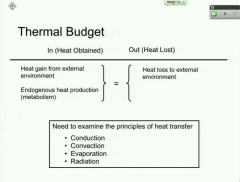
Must have equal heat in or heat out |
|
|
Heat Transfer: Conduction |

Heat transfer through physical contact (solids, liquids) Factors that influence: - Temp gradient - Surface Area - Length b/w objects - Thermal conductivity |
|
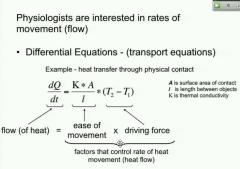
|

Metals high thermal conductivity, while water and tissue are fairly low |
|
|
Heat Transfer Example |

|
|
|
Heat Transfer - Convection |
Occurs when environmental medium (air/water) moves over the body surface - modified form of conduction (slower) 2 Types of Convection Free Convection: environmental medium not mechanically moved Forced Convection: environmental medium physically moved |
|
|
Free convection |

Boundary layers are set up to keep the animal warm - warmer than air temperature |
|
|
Forced convection |
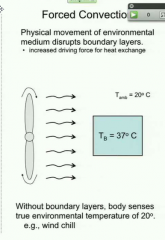
Good on a hot day - stand in front of a fan |
|
|
Heat Transfer: Evaporation |
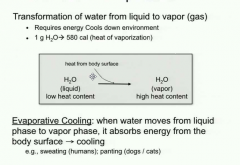
Always involves water loss - trade-off |
|
|
Heat Transfer: Radiation |
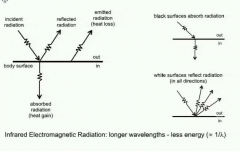
reflected radiation doesn't contribute to heat in the body everything that has head radiated infared radiation - energy lost to environment |
|
|
Thermal Budget |
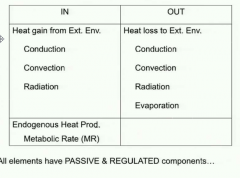
|
|
|
Seagulls Example Tbody = 39 C Tice = 0 C HIGH potential for heat loss |
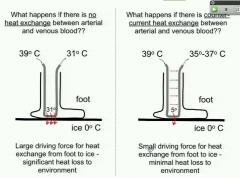
1st option (L) - heat loss in the body! 2nd - less heat loss! small driving force (counter-current) |
|
|
Counter-Current Exchange (most efficient way of minimizing heat loss) |
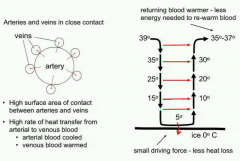
Trade off - extremities gets very cold but body is warmer |
|
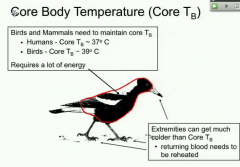
Core - brain and heart most important to remain warm |
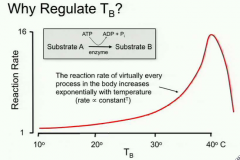
Why Regulate Tb? - at a warm enough temperature it is fatal! organism starts to denature - higher MR needs more energy, low RR slow animal |
|
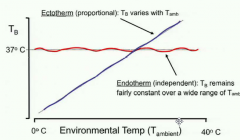
General strategies to regulate Tb |
Ectotherms: use external heat to thermoregulate
Endotherms: use internal heat (MR) to thermoregulate - energetically very costly |
|
|
Regulation of Endotherms/Ectotherms |
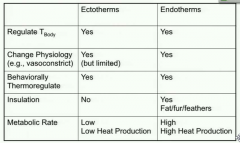
|

